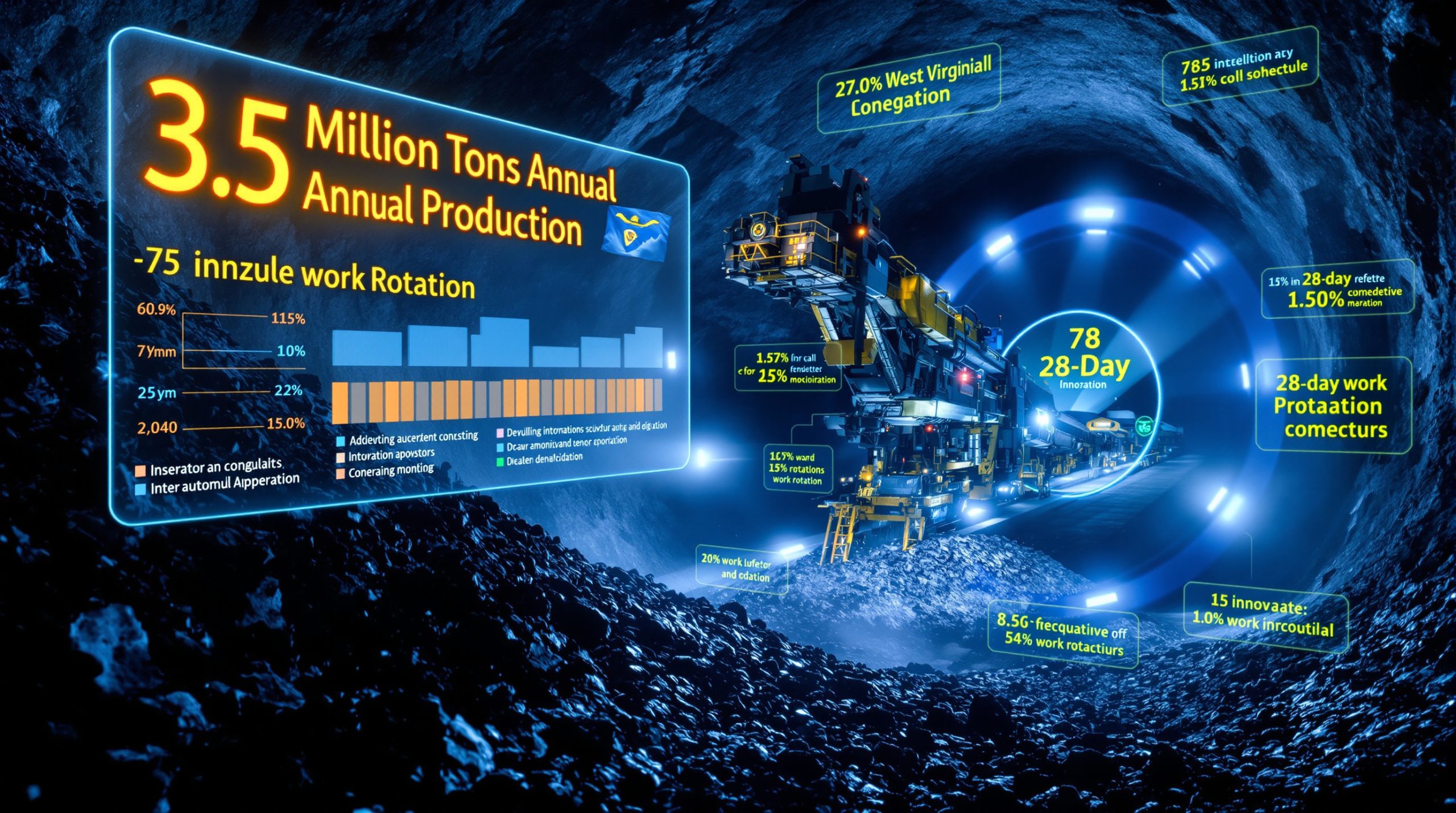Diamond deposits formation represents one of Earth's most extraordinary geological phenomena, occurring under extreme conditions that exist nowhere else on our planet's surface. These remarkable concentrations of crystallized carbon emerge from depths between 140 and 250 kilometers beneath the surface, where temperatures soar to 900-1,300°C and pressures reach a staggering 45-60 kilobars. Furthermore, understanding the mineral exploration importance helps geologists appreciate how these unique deposits fit within broader resource development strategies.
The formation process requires a delicate balance of geological factors that have remained stable for billions of years. Unlike other precious minerals that form in crustal environments, diamonds can only crystallize within Earth's mantle, where carbon atoms arrange themselves into the distinctive cubic crystal lattice that gives diamonds their legendary hardness and brilliance.
The Deep Earth Origins of Diamond Creation
The diamond stability zone represents a narrow pressure-temperature window where diamond remains the stable form of carbon. Research published in Earth and Planetary Science Letters reveals that diamonds exist within a specific stability field where both pressure and temperature must remain within precise ranges. Outside this zone, diamond converts to graphite or dissolves completely, making the conditions for diamond deposits formation exceptionally rare.
Continental shields, also known as cratons, provide the essential geological framework for diamond preservation. These ancient geological formations possess thick lithospheric roots extending more than 200 kilometers deep, creating the cool, stable environment necessary for long-term diamond survival. The Kaapvaal Craton in South Africa, for instance, contains pipes dating back 1.2-1.6 billion years and hosts famous mines like the Premier mine, which produced the largest gem diamond ever discovered at 3,106 carats in 1905.
The Diamond Stability Zone Explained
The graphite-diamond equilibrium boundary occurs at approximately 2-3 GPa at 1,000°C, establishing the minimum conditions required for diamond formation. Continental lithospheric keels must maintain heat flow levels below 38 milliwatts per square meter to preserve diamond stability over geological time.
Key characteristics of the diamond stability zone include:
• Archean cratons older than 2.5 billion years provide optimal conditions
• Depleted, refractory mantle composition essential for thermal stability
• Lithospheric thickness must exceed 175 kilometers for viable deposits
• Thermal history must show gradual cooling over billions of years
The age factor proves critical in diamond formation, with individual crystals requiring 1-3.3 billion years to develop. Some diamonds date back to Earth's Archean Eon, making them among the oldest materials accessible to human study and providing unprecedented insights into early Earth conditions through diamond formation studies.
How Do Carbon Atoms Transform Into Diamond Crystals?
The transformation of carbon atoms into diamond crystals represents one of nature's most remarkable processes, occurring through metasomatic reactions that unfold over geological timescales measured in billions of years. Unlike simple crystallization from cooling melts, diamond deposits formation involves complex interactions between carbon-bearing fluids and existing mantle minerals.
Studies published in Earth-Science Reviews demonstrate that diamond formation through metasomatism involves carbon-rich fluids percolating through mantle rocks, where carbon precipitates as diamond while other elements exchange with host minerals. This process fundamentally differs from conventional igneous crystallization and helps explain the chemical signatures found in natural diamonds.
The Metasomatic Formation Process
Diamond crystal growth occurs at remarkably slow rates of approximately 0.001-0.01 millimeters per year under mantle conditions. The metasomatic process involves several key stages:
1. Fluid Migration: Carbon-oxygen-hydrogen bearing fluids released from dehydrating slabs at depths of 150-250 kilometers migrate through mantle rocks.
2. Chemical Exchange: These fluids interact with existing minerals, dissolving some components while depositing carbon in the form of diamond crystals.
3. Crystal Growth: Diamond crystals develop slowly within the cubic crystal lattice structure, requiring millions to billions of years to reach millimeter sizes.
4. Preservation: The crystals remain stable only within the narrow diamond stability field, requiring continuous maintenance of extreme pressure and temperature conditions.
Carbon Sources in Earth's Mantle
The carbon that forms diamonds originates from multiple sources within Earth's deep interior, each leaving distinctive chemical fingerprints that geologists use to trace diamond origins:
| Carbon Source | Characteristics | Isotopic Signature (δ13C) |
|---|---|---|
| Primordial Mantle | Original Earth carbon from accretion | -8‰ to -2‰ |
| Subducted Organic Matter | Oceanic crust and sediments | -25‰ to -10‰ |
| Carbonate Recycling | Marine limestone and shells | Variable, often heavier |
Primordial carbon constitutes an estimated 90% of the mantle carbon inventory, representing material trapped during Earth's accretion 4.5 billion years ago. This carbon shows relatively uniform isotopic compositions reflecting early Earth conditions.
Subducted carbon enters the mantle through tectonic processes at rates of 40-80 megatons per year, carrying distinctive light isotopic signatures from organic matter and carbonates formed at Earth's surface. Additionally, the mineralogy of ores provides insights into how carbon-bearing minerals evolve during these processes. Eclogitic diamonds formed from this source comprise approximately 1-5% of natural diamonds and contain distinctive mineral inclusions of omphacite and rutile.
What Role Do Volcanic Eruptions Play in Diamond Transport?
Volcanic eruptions provide the essential mechanism for transporting diamonds from their deep mantle birthplace to Earth's surface, but only under very specific and extraordinary conditions. The journey represents a race against time, where diamonds must reach the surface before converting back to graphite or dissolving in the ascending magma.
Research published in Science demonstrates that diamond preservation requires extraordinarily rapid ascent velocities. Kimberlite magmas must travel at speeds of 4-20 meters per second, equivalent to 14-72 kilometers per hour, to transport diamonds from depths of 150 kilometers to the surface in just 1-4 hours.
Kimberlite and Lamproite Magma Systems
Kimberlite eruptions represent some of the most unusual volcanic phenomena on Earth, driven by volatile-rich magma compositions that differ dramatically from conventional volcanic systems. These magmas contain 5-15 weight percent CO₂ and 1-5 weight percent H₂O at depth, creating explosive eruption dynamics similar to uncorking a pressurized bottle.
Distinctive characteristics of kimberlite magmas include:
• Ultramafic composition with more than 18% MgO and less than 1% SiO₂
• Distinctive minerals including phlogopite mica, spinel, perovskite, and monticellite
• Mantle-derived megacrysts of garnet reaching up to 30 centimeters in diameter
• Carrot-shaped pipe structures that narrow with increasing depth
The Yakutia region of Russia contains more than 1,000 kimberlite pipes within the Siberian Craton, with famous examples like the Mir and Udachnaya pipes reaching depths exceeding 1,000 meters. These pipes demonstrate the incredible erosive power of kimberlite eruptions and their ability to excavate massive volumes of rock during ascent.
The Race Against Time: Preserving Diamonds During Transport
The preservation of diamonds during volcanic transport depends on a delicate balance of temperature, pressure, and time. As kimberlite magma ascends through the lithosphere, both temperature and pressure decrease rapidly, potentially destabilizing any diamonds carried within the magma.
Critical factors for diamond survival include:
Rapid Cooling: Magma must cool quickly enough to prevent diamond resorption, typically requiring ascent times measured in hours rather than days or weeks.
Volatile Exsolution: The release of dissolved CO₂ and H₂O drives rapid ascent by creating gas-driven eruption dynamics that accelerate magma transport.
Xenolith Protection: Diamonds enclosed within mantle rock fragments receive additional protection from direct contact with corrosive magma.
Temperature Buffering: The presence of abundant xenoliths helps buffer magma temperature through thermal mass effects.
Lamproite eruptions follow similar principles but show important chemical differences, particularly higher potassium content exceeding 3 weight percent and distinctive minerals including leucite, sanidine, and richterite amphibole. The famous Argyle mine in Western Australia, which operated from 1983 to 2020, exemplifies lamproite diamond deposits and produced more than 865 million carats during its operational lifetime.
Which Rock Types Host the World's Diamond Deposits?
Diamond deposits formation occurs within specific rock types that possess the unique characteristics necessary to transport and preserve these precious crystals during their journey from mantle to surface. Understanding these host rocks proves essential for diamond exploration and reveals important information about the geological processes involved in diamond formation and preservation.
According to the U.S. Geological Survey, kimberlite deposits account for 85-90% of natural diamond production globally, while lamproite deposits contribute 5-10%, and secondary deposits represent approximately 5% of total production. This distribution reflects both the relative abundance of different host rock types and their economic significance for diamond mining operations.
Primary Host Rocks and Their Characteristics
Kimberlite Deposits:
Kimberlite represents the most economically important diamond host rock, characterized by ultramafic volcanic composition and distinctive mineralogy. Research published in the Journal of Petrology defines kimberlite by its essential mineral assemblage and unique chemical signatures that distinguish it from other volcanic rocks.
Essential characteristics of kimberlite include:
• Mineral composition: Olivine (often serpentinized), phlogopite mica, carbonate minerals
• Groundmass minerals: Monticellite, perovskite, spinel, apatite
• Mantle inclusions: Garnet peridotite and eclogite xenoliths
• Diamond grades: Typically range from 0.01-2.0 carats per tonne
Major kimberlite districts demonstrate the global distribution of these deposits. Botswana's Orapa mine, discovered in 1967, produces 10-12 million carats annually from Cretaceous-age kimberlites. Canada's Diavik mine, located in the Northwest Territories, extracts diamonds from four distinct kimberlite pipes designated A154S, A154N, A418, and A21.
Lamproite Formations:
Lamproite differs significantly from kimberlite in both chemistry and mineralogy, though both rock types serve as diamond carriers. Studies published in Contributions to Mineralogy and Petrology indicate that lamproites form from melting of metasomatized lithospheric mantle enriched by ancient subduction processes.
Distinguishing features of lamproite:
• Chemical signature: High potassium content and potassium-titanium-barium enrichment
• Diagnostic minerals: Leucite, sanidine, richterite amphibole
• Variable diamond content: Ranges from completely barren to highly enriched
• Formation environment: Typically erupts through thinner lithosphere than kimberlite
The Argyle mine in Western Australia exemplified lamproite diamond deposits, supplying more than 90% of the world's pink diamonds before closure in 2020. At peak production, the mine processed ore containing an estimated 20 carats per tonne, demonstrating the exceptional richness possible in lamproite systems.
Secondary Deposit Formation Through Erosion
Secondary diamond deposits form through natural weathering and erosion processes that liberate diamonds from primary host rocks over geological time. Research published in Economic Geology explains that diamonds survive long-distance transport due to their exceptional hardness and chemical inertness, allowing concentration in favorable depositional environments.
Key characteristics of secondary deposits:
Alluvial Systems: Rivers and streams transport diamonds downstream from eroded kimberlite sources, concentrating them in gravel beds and sandbars.
Coastal Environments: Ocean currents and wave action can concentrate diamonds along shorelines, as demonstrated by Namibian marine deposits.
Grade Variations: Namibian coastal deposits average 1-5 carats per cubic meter, while grades vary significantly based on transport distance and concentration mechanisms.
Survival Factors: Diamonds resist abrasion and chemical weathering during transport, though quality may decrease with distance from source.
Historical diamond discoveries often originated from secondary sources, including deposits along South Africa's Orange River and the Kasai region of the Congo Basin. These discoveries frequently led to the eventual location of primary kimberlite sources through systematic exploration programs.
Where Are the World's Major Diamond Deposits Located?
The global distribution of diamond deposits reflects fundamental aspects of Earth's deep structure and geological evolution. Economic diamond deposits occur almost exclusively on ancient continental cratons, where specific combinations of age, thickness, and thermal history create ideal conditions for diamond formation and preservation.
According to the U.S. Geological Survey's 2024 Mineral Commodity Summaries, global diamond production demonstrates clear geographic concentration:
| Country | Production (Million Carats) | Primary Host Craton |
|---|---|---|
| Russia | 38 | Siberian Platform |
| Botswana | 24 | Kaapvaal/Zimbabwe |
| Canada | 16 | Slave/Superior |
| DR Congo | 15 | Congo/Kasai |
| Australia | 13 | Kimberley/Pilbara |
| South Africa | 9 | Kaapvaal |
Continental Shield Distribution Patterns
Research published in Science demonstrates that approximately 95% of economic diamond deposits occur on cratons older than 2.5 billion years. This remarkable correlation reflects the unique properties of Archean continental lithosphere and its role in diamond formation and preservation.
Critical craton characteristics include:
Lithospheric Thickness: Viable diamond deposits require lithospheric roots exceeding 200 kilometers in thickness, extending well into the diamond stability field.
Thermal Properties: Ancient cratons maintain low geothermal gradients, with heat flow values typically below 40 milliwatts per square meter.
Chemical Depletion: Archean lithosphere shows distinctive chemical depletion in iron and aluminum, creating buoyant, stable continental roots.
Tectonic Stability: These regions have remained tectonically stable for billions of years, avoiding the heating and disruption that would destabilize diamond deposits.
The Slave Craton in Canada exemplifies these relationships perfectly. Discovery of the Ekati mine in 1991 revealed kimberlites ranging from 45-75 million years old containing diamonds formed 1.5-3.5 billion years ago. This vast age difference illustrates how ancient diamond formation events are preserved within stable cratonic lithosphere until relatively recent volcanic transport to the surface.
Why Ancient Geological Terranes Matter
The relationship between craton age and diamond potential appears remarkably consistent worldwide. Studies published in Tectonophysics reveal that lithospheric structure and mantle composition exert primary controls on diamond deposit distribution, which can be classified into different mineral deposit tiers based on their size and grade characteristics.
Age-related factors affecting diamond deposits:
Archean Depletion Events: Ancient partial melting events removed basaltic components from cratonic mantle, creating refractory residues stable at high temperatures.
Thermal Evolution: Slow cooling over billions of years allowed establishment of thick, cold lithospheric keels extending into diamond stability zones.
Mechanical Strength: Depleted Archean lithosphere resists tectonic disruption, preserving diamond-bearing regions over geological time.
Kimberlite Focusing: Ancient suture zones and lithospheric boundaries appear to focus kimberlite eruptions, creating geographic clustering of diamond deposits.
The Kaapvaal Craton in South Africa demonstrates these principles clearly. This ancient landmass, with components dating back 3.6 billion years, hosts numerous world-class diamond deposits including the historic Kimberley mines and the modern Venetia operation. The craton's exceptional lithospheric thickness of 200-250 kilometers creates ideal conditions for both diamond formation and preservation.
Conversely, young tectonic regions where mantle temperatures remain elevated and lithosphere stays thin rarely host significant diamond deposits. This relationship explains why mobile belts, volcanic arcs, and recently active tectonic zones generally lack economic diamond occurrences despite extensive magmatic activity.
How Do Geologists Explore for New Diamond Deposits?
Diamond exploration represents one of the most sophisticated applications of geological science, combining regional-scale geological knowledge with advanced geochemical and geophysical techniques. The rarity of diamond deposits and their specific geological requirements demand systematic approaches that can efficiently evaluate vast areas for diamond potential.
Modern exploration programs typically follow a hierarchical approach, beginning with regional cratonic assessment and progressively focusing on increasingly detailed targets. Success rates remain challenging, with industry statistics indicating that only approximately 1% of known kimberlite occurrences contain economic diamond concentrations.
Regional-Scale Exploration Strategies
Exploration begins with identification of favorable geological terranes, specifically ancient cratonic regions with appropriate lithospheric characteristics. Geologists examine topographic patterns for subtle circular depressions that might indicate buried kimberlite pipes, often using satellite imagery and digital elevation models to identify potential targets across vast areas.
Primary exploration criteria include:
Cratonic Terrain Mapping: Focus on Archean shields and platforms with thick lithospheric roots extending into the diamond stability field.
Aeromagnetic Survey Analysis: Kimberlite pipes typically produce distinctive circular magnetic signatures due to their iron-rich mineral composition and contrasting magnetic properties compared to country rock.
Indicator Mineral Programs: Systematic sampling of stream sediments, soils, and aeolian deposits to detect resistant minerals diagnostic of kimberlite weathering.
Structural Analysis: Investigation of deep lithospheric structures that may control kimberlite emplacement, including ancient suture zones and major fault systems.
The Canadian diamond discoveries of the 1990s exemplify successful regional exploration. Geologists recognised that the Slave Craton possessed geological characteristics similar to diamond-producing regions in South Africa and Russia, leading to systematic exploration programs that discovered multiple world-class deposits including Ekati, Diavik, and Gahcho Kué.
Advanced Detection Methods
Once regional targets are identified, detailed geophysical survey techniques provide essential information about subsurface geology and potential kimberlite occurrence. These methods exploit the distinctive physical properties of kimberlite pipes compared to surrounding country rock.
| Method | Application | Target Property |
|---|---|---|
| Magnetic | Primary detection | Iron-rich mineral content |
| Electromagnetic | Conductive mineralisation | Alteration haloes |
| Gravity | Density contrasts | Pipe geometry |
| Ground Penetrating Radar | Shallow structures | Weathering profiles |
Magnetic surveys prove most effective for kimberlite detection, as these pipes typically show distinctive magnetic signatures related to magnetite and other iron-bearing phases. High-resolution aeromagnetic data can identify circular anomalies as small as 50-100 meters in diameter, guiding ground-based follow-up investigations.
Indicator mineral analysis provides crucial geochemical evidence for kimberlite presence even when pipes remain buried or deeply weathered. Key indicator minerals include:
• Garnet: Pyrope garnets with distinctive chromium and calcium content
• Ilmenite: Titanium-iron oxide with specific compositional ranges
• Chromite: Chromium-bearing spinel with diagnostic chemistry
• Clinopyroxene: Calcium-bearing pyroxene with mantle-derived signatures
These minerals resist weathering and can be transported considerable distances from their source, allowing geologists to trace dispersal trains upstream to locate hidden kimberlite bodies. Chemical analysis of indicator mineral compositions provides information about the pressure and temperature conditions of formation, helping assess diamond potential.
What Mining Methods Extract Diamonds Most Effectively?
Diamond mining employs diverse extraction methods tailored to specific deposit types, geological settings, and economic conditions. The choice between surface and underground operations depends on factors including pipe depth, ore grade, rock strength, environmental considerations, and project economics.
Modern diamond mining operations represent some of the most technically sophisticated extractive industries, requiring precise planning and execution to recover diamonds efficiently while maintaining safety and environmental standards. The extreme value per unit weight of diamonds allows economic extraction of very low-grade ores, with some operations processing material containing less than one carat per tonne.
Primary Deposit Extraction Approaches
Open Pit Operations:
Open pit mining remains the preferred method for extracting near-surface kimberlite pipes, allowing efficient removal of large tonnages with relatively low operating costs per tonne processed. This method works best for pipes with substantial surface expression and favourable ore grades.
Key characteristics of open pit diamond mining:
• Scale Requirements: Modern operations move 50-100 million tonnes of material annually
• Equipment Specifications: Electric shovels with 40-60 cubic meter bucket capacities
• Economic Depth Limits: Typically viable to depths of 400-600 meters depending on ore grade
• Waste-to-Ore Ratios: Range from 3:1 to 8:1 depending on pit geometry and grade distribution
The historic Kimberley mine in South Africa, known as the "Big Hole," demonstrates both the potential and limitations of open pit diamond mining. Hand-excavated to a depth of 240 meters, this operation yielded 14.5 million carats between 1871 and 1914, establishing fundamental principles still used in modern operations.
Underground Mining Systems:
As open pits reach economic depth limits, operations typically transition to underground methods that can access deeper ore zones while maintaining acceptable costs. Block caving represents the most common underground diamond mining method, particularly suitable for large, uniform ore bodies.
Block caving methodology involves:
Infrastructure Development: Construction of production levels, extraction drives, and ventilation systems at depth.
Undercutting Operations: Systematic removal of support rock causes overlying ore to fracture and cave under its own weight.
Gravity Flow Systems: Broken ore flows through draw points to collection areas without additional blasting or mechanical extraction.
Progressive Extraction: The cave propagates upward as lower levels are extracted, eventually reaching the surface.
Sub-level retreat methods provide alternatives for smaller or irregularly shaped ore bodies, involving systematic extraction of horizontal slices while maintaining temporary support systems.
Secondary Deposit Recovery Methods
Alluvial diamond mining employs techniques specifically adapted to recover diamonds from unconsolidated sediments in river channels, terraces, and coastal environments. These operations typically process much larger volumes of material but at significantly lower grades than primary deposits.
Processing characteristics of alluvial operations:
Volume Requirements: May process millions of cubic meters annually to achieve economic production
Grade Variations: Namibian coastal deposits average 1-5 carats per cubic meter, while most alluvial deposits show much lower grades
Screening Methods: Multiple-stage screening separates diamonds from associated gravels and sands
Environmental Considerations: Water management and habitat protection require careful planning and monitoring
Artisanal mining remains important in many developing regions, employing simple technologies including hand panning, sluice boxes, and small-scale washing plants. While individual operations stay small, collective production from artisanal mining contributes significantly to global diamond supply, particularly industrial-grade stones from alluvial deposits.
How Are Diamonds Separated and Processed After Mining?
Diamond processing requires sophisticated separation techniques that exploit the unique physical and chemical properties of diamonds to efficiently recover them from large volumes of ore. The extreme value density of diamonds necessitates processing methods capable of achieving very high recovery rates while minimising stone damage during handling.
Modern processing plants typically achieve recovery rates exceeding 95% for diamonds larger than 0.5 carats, with specialised techniques for smaller stones that might be missed by conventional methods. The processing flow sheet must accommodate wide variations in diamond size, shape, and quality while maintaining consistent throughput and recovery performance.
Liberation and Concentration Processes
The processing sequence begins with primary crushing to liberate diamonds from their host rock matrix while avoiding excessive impact that might damage larger stones. Jaw crushers and cone crushers reduce kimberlite to manageable sizes, typically 25-50 millimeters, whilst preserving diamond integrity through controlled impact forces.
| Processing Stage | Method | Operating Principle | Recovery Target |
|---|---|---|---|
| Primary Crushing | Jaw/Cone Crushers | Mechanical size reduction | >95% liberation |
| Dense Media Separation | Heavy Liquid Flotation | Specific gravity differences | >90% pre-concentration |
| Grease Table Processing | Hydrophobic Adhesion | Surface chemistry | >85% diamond recovery |
| X-ray Fluorescence | Optical Detection | Luminescence properties | >98% final recovery |
Dense media separation exploits the high specific gravity of diamonds (3.52) compared to most silicate minerals (2.6-3.2) and utilises heavy liquid systems with precisely controlled densities. Ferrosilicon suspensions with specific gravities of 2.9-3.1 effectively separate diamonds into heavy fractions containing less than 5% of the original feed tonnage.
Grease table processing takes advantage of diamonds' unique hydrophobic properties, causing them to adhere to grease-coated surfaces while hydrophilic minerals wash away with water. This method proves particularly effective for larger diamonds but requires careful maintenance of grease conditions and surface preparation.
Quality Assessment and Grading
Once recovered, diamonds undergo comprehensive evaluation using the internationally recognised "Four Cs" criteria that determine their ultimate value and market classification. This assessment process requires specialised expertise and equipment to accurately characterise each stone's properties and contributes to current industry innovation trends in automated grading systems.
The Four Cs evaluation system:
Carat Weight: Precise measurement using calibrated scales accurate to 0.01 carats, with particular attention to stones approaching significant size thresholds.
Colour Grading: Assessment using standardised lighting conditions and master comparison stones, ranging from colourless (D) through increasingly yellow tints (Z).
Clarity Classification: Microscopic examination to identify and characterise internal inclusions and external blemishes affecting transparency and light transmission.
Cut Potential Assessment: Evaluation of crystal form, internal structure, and inclusion patterns to determine optimal cutting strategies for maximum value recovery.
Advanced sorting technologies now supplement traditional hand-sorting methods, including X-ray transmission systems that can process thousands of stones per hour while maintaining high accuracy levels. Photoluminescence detection exploits diamond luminescence properties under ultraviolet excitation, enabling automated identification and sorting based on luminescence characteristics.
Quality distribution in typical diamond production shows significant variation, with industrial-grade stones comprising 75-80% of total carat production while gem-quality diamonds represent 20-25% but account for the majority of total value. This distribution pattern affects processing strategies and economic planning for mining operations.
What Environmental and Ethical Considerations Affect Diamond Mining?
Diamond mining operations face increasingly stringent environmental and social responsibility requirements that significantly influence project development, operational practices, and long-term sustainability planning. The industry's historical association with conflict zones and environmental degradation has driven comprehensive reforms in mining practices and supply chain transparency.
Modern diamond mining companies typically allocate 5-15% of capital expenditures to environmental protection and community development programs, reflecting both regulatory requirements and industry recognition that social licence to operate requires demonstrable commitment to responsible practices.
Sustainable Mining Practices
Environmental impact mitigation begins with comprehensive baseline studies that characterise pre-mining ecosystem conditions and establish monitoring protocols for ongoing assessment. Life-cycle assessment methodologies evaluate environmental impacts from exploration through closure and post-mining land use.
Key environmental management strategies include:
Water Management Systems: Treatment of process water and pit dewatering to meet discharge standards, with many operations achieving zero liquid discharge through recycling and evaporation systems.
Biodiversity Conservation: Protection of sensitive habitats through impact avoidance, habitat creation, and species relocation programs designed to achieve net positive impact on local ecosystems.
Air Quality Control: Dust suppression systems, emission controls on mobile equipment, and continuous air quality monitoring to protect worker health and surrounding communities.
Waste Rock Management: Engineered disposal systems with appropriate containment measures and progressive rehabilitation to minimise long-term environmental liabilities.
Land rehabilitation requirements mandate restoration of mined areas to productive post-mining land uses, typically requiring revegetation success rates exceeding 80% measured five years after planting. Progressive rehabilitation during operations reduces total disturbed area and demonstrates ongoing commitment to environmental stewardship.
Ethical Sourcing and Certification
The Kimberley Process Certification Scheme, established in 2003, provides the primary international framework for preventing trade in conflict diamonds. This system requires participating countries to implement domestic controls and issue certificates for all diamond exports, covering approximately 99.8% of global rough diamond production.
Key components of ethical sourcing include:
Chain of Custody Documentation: Comprehensive tracking from mine to market ensuring diamonds can be traced throughout the supply chain.
Third-Party Auditing: Independent verification of mining operations, processing facilities, and trading practices by accredited certification bodies.
Community Benefit Programs: Revenue sharing, local employment, infrastructure development, and education initiatives that provide tangible benefits to mining-affected communities.
Transparency Reporting: Public disclosure of payments to governments, environmental performance data, and social investment outcomes through standardised reporting frameworks.
Supply chain transparency initiatives extend beyond conflict prevention to address broader social and environmental concerns, including worker rights, local economic development, and long-term sustainability planning. Many major diamond producers now participate in voluntary programs that exceed minimum Kimberley Process requirements.
Economic impact assessments demonstrate that diamond mining can generate significant benefits for local communities and national economies when properly managed. Botswana, for example, has used diamond revenues to achieve middle-income status and fund comprehensive social development programs including universal healthcare and education systems.
How Do Impact Events Create Alternative Diamond Deposits?
Impact diamond formation represents one of nature's most dramatic geological processes, occurring when asteroid or comet impacts generate extreme shock pressures and temperatures capable of instantaneously transforming carbon into diamond. These events create conditions that far exceed normal mantle pressures, producing diamonds with distinctive characteristics that differ markedly from conventional mantle-derived stones.
Shock metamorphism during major impacts can generate pressures exceeding 100 GPa (1 million atmospheres) and temperatures above 2,000°C for microsecond durations. Under these extreme conditions, any carbon-bearing material within the impact zone undergoes immediate transformation to diamond without requiring the millions of years typical of mantle formation processes.
Asteroid Impact Diamond Formation
Impact diamonds form through several distinct mechanisms during large meteorite impacts, each producing diamonds with characteristic features that preserve evidence of the formation environment. Research into how diamonds are formed reveals that impact diamonds typically occur as microscopic crystals with distinctive shock features absent from mantle diamonds.
Formation mechanisms include:
Direct Shock Transformation: Carbon-bearing target rocks undergo immediate conversion to diamond during peak shock pressure conditions, creating polycrystalline aggregates with grain sizes typically less than 10 micrometers.
Vapor Phase Crystallisation: Carbon vapour generated by shock heating crystallises as diamond during rapid cooling in the post-impact environment.
Solid-State Conversion: Graphite and other carbon phases transform to diamond through solid-state phase transitions under sustained high pressure.
Impact melt interactions create additional diamond formation opportunities as carbon-rich materials interact with silicate melts under extreme conditions. These processes can produce diamonds with unusual nitrogen contents and isotopic compositions that distinguish them from mantle diamonds.
Notable impact diamond occurrences include the Popigai structure in Siberia, formed by a 35-kilometer diameter asteroid impact approximately 35 million years ago. This structure contains an estimated trillions of carats of impact diamonds, though their small size and polycrystalline nature limit commercial applications to industrial uses.
Subduction Zone Diamond Genesis
Ultra-high pressure metamorphism in subduction zones creates another alternative pathway for diamond deposits formation, occurring when oceanic crust and associated sediments are buried to extreme depths during continental collision processes. These diamonds form under different conditions than traditional mantle diamonds and provide unique insights into deep crustal processes.
Subduction zone formation characteristics:
Depth Requirements: Formation typically occurs at depths exceeding 120 kilometers where continental collision drives oceanic crust well into the diamond stability field.
Temperature Constraints: Lower temperatures than mantle diamonds, typically 400-800°C, create different growth environments and chemical signatures.
Host Rock Types: Metamorphic rocks including eclogites, gneisses, and garnet-bearing schists rather than igneous kimberlites or lamproites.
Age Relationships: Diamonds form during active metamorphism and are subsequently preserved within continental crust rather than mantle lithosphere.
These alternative formation mechanisms demonstrate the diverse geological processes capable of creating diamond deposits, extending our understanding beyond traditional mantle-derived occurrences to encompass the full spectrum of extreme pressure environments on Earth.
Looking to Capitalise on Australia's Next Major Diamond Discovery?
Discovering diamond deposits requires extreme geological conditions that occur rarely, but when announced on the ASX, these discoveries can create significant trading opportunities. Discovery Alert's proprietary Discovery IQ model monitors ASX announcements for significant mineral discoveries, including rare diamond finds that could present exceptional market opportunities. Begin your 30-day free trial today to position yourself ahead of the market when the next major discovery is announced.




